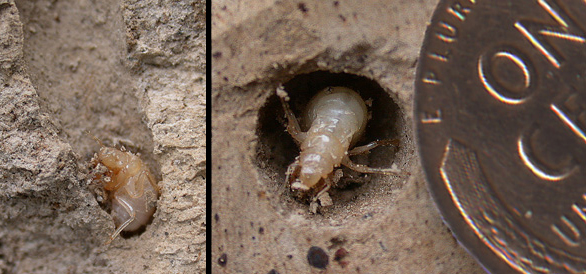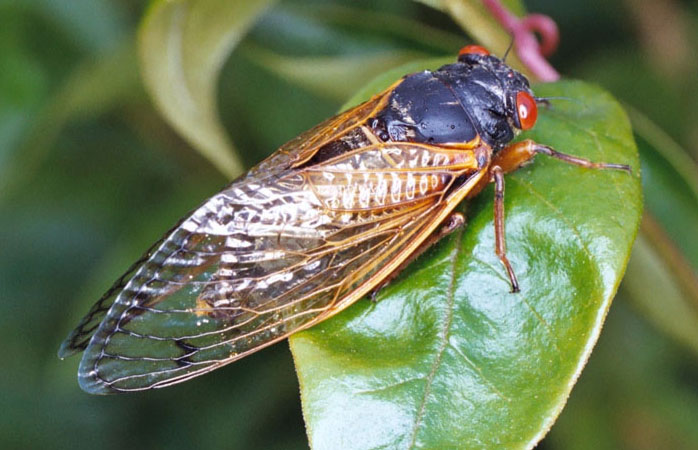This year, a rare cicada event will take place for the first time in 221 years. Two huge broods of periodical cicadas will burst from the ground at the same time, flooding parts of the U.S. with trillions of the chunky insects. The last time this happened was when Thomas Jefferson was president.
One group of the periodical cicadas, known as brood XIX, emerge from the ground every 13 years. The second group, brood XIII, does this every 17 years. For each brood, this is the length of their juvenile period. The nymphs (juveniles) live underground, feeding on tree root sap. They surface when they reach adulthood for a giant mating event.
While cicadas live in many places around the world, these are annual cicadas. Large and green, they buzz loudly from the treetops on hot summer days. But periodical cicadas only occur in North America. They are smaller, with black bodies and big red eyes.

Cicadas on a tree. Photo: Periodical Cicada Project
‘Cicada-geddon’
Cicada expert John Cooley calls the rare event “cicada-geddon,” because of the plague-like number of insects that suddenly appear. They will emerge at the end of April and mate over the next several weeks. It will be a noisy affair; their buzzing can hit 110 decibels. “Periodical cicadas don’t do subtle,” Cooley told Sky News.
The next dual emergence won’t reoccur until 2245.
Most people will not notice the super-abundance. Though the periodical cicadas will emerge across 17 states, both broods overlap only in a few parts of Illinois. Mainly, the 13-year cicada will surface in the southeastern U.S. and its 17-year cousin in the Midwest.
Many have questioned whether the double appearance could lead to interbreeding. Chris Simon, an ecologist with the Periodical Cicada Project, told Live Science, “There will not be a new brood or cycle. Even if the broods were to interbreed, any offspring would be indistinguishable from cicadas that were not hybrids.”
Speaking about the rare occurrence, entomologist Catherine Dana told The Guardian, “I’ve been looking forward to this for many years…This is a natural wonder of the world. You just don’t see this biomass of terrestrial life anywhere else.”

Periodical cicada nymphs climbing out of underground tunnels. Photo: Periodical Cicada Project
Scientists are unsure why the cicadas have evolved such long juvenile lifecycles underground. The most popular theory is that being out of view for so long before emerging en masse for a giant mating event gives a better chance of survival against predators.
The insects construct exit tunnels up to the surface and clamber out in batches. After shedding their exoskeletons, they climb into trees to mate.
The males make loud shrieking noises to attract a partner. Eventually, the females lay their eggs in the trees. After a few hectic weeks, the adults die and things go quiet again.
About six weeks later, the eggs hatch, although most people won’t notice that, since the hatchlings are tiny and inconspicuous, explained Cooley.
The cicadas emerge when the soil temperature reaches 17˚C, and researchers wonder whether the warming climate will eventually affect their cycle.






